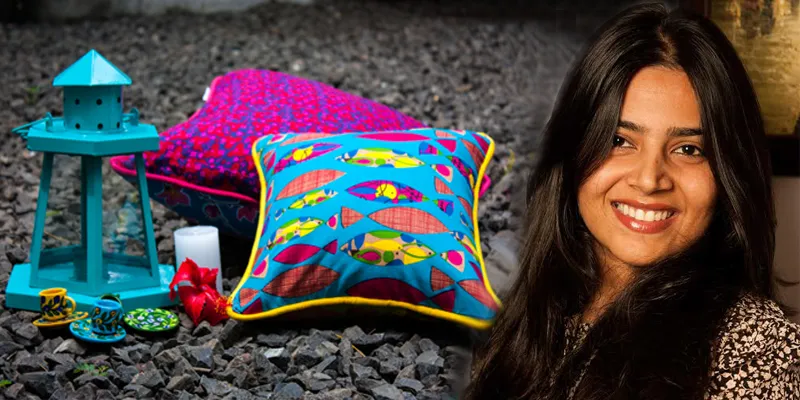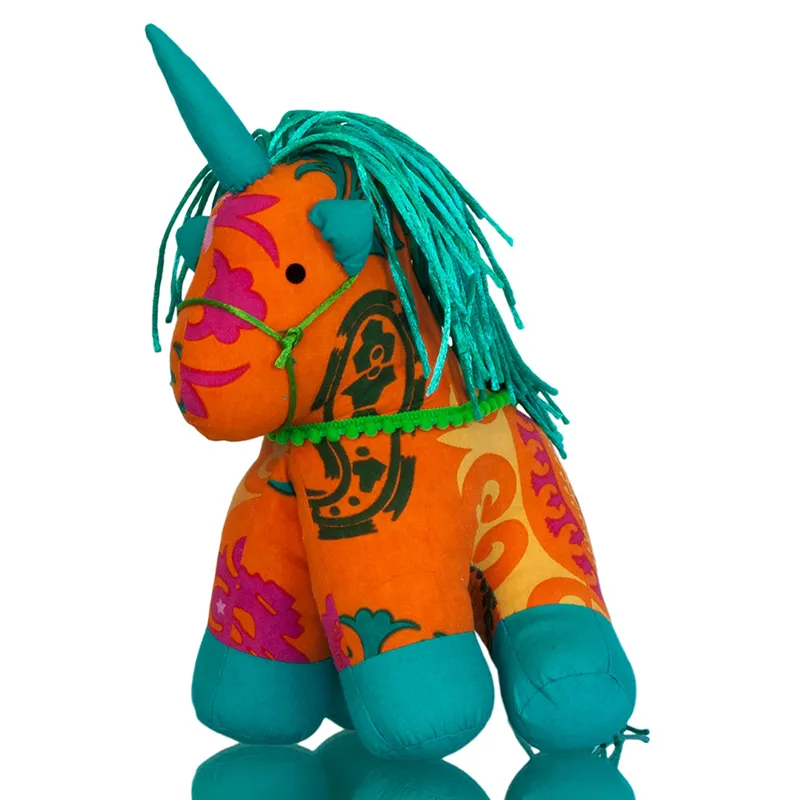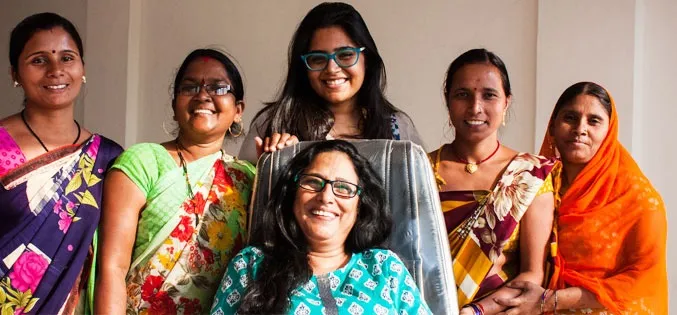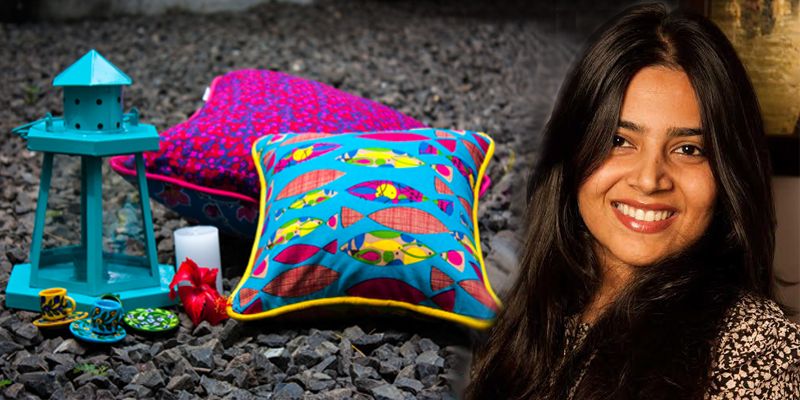Daisy Tanwani’s Pinklay is an unapologetic celebration of colour
From one order in 10 days, Pinklay went on to sell 200 quilts last month, with the brand crossing the 4,000-orders mark overall
In May 2015, Daisy Tanwani, along with her husband and a couple of friends, had gone to a restaurant for dinner. The conversation drifted to starting up and was, in fact, triggered by the story of a startup covered on YourStory. The group chatted about their entrepreneurial aspirations but when they walked to the parking lot after dinner, Daisy turned to her husband and said, “We only talk, we don’t do anything.” Determined to get out of their comfort zone, the couple took a break from work the very next day and set off on an impromptu recce trip to Kutch and Rajasthan. They wanted to find out if it made sense to start up in Daisy’s favourite segment—handicrafts.

They were floored by the beauty and versatility of Indian arts and craft during their journey but also noticed how most craftsmen operated in silos, with no national-level brands giving them a fair deal. Thus, Pinklay was unofficially born that very month, with the official launch taking place in December 2015. Bootstrapped and run by Daisy’s small but efficient team, the brand is already on its way to breaking even.
Daisy responds with a laugh to my query about the name Pinklay. “Whichever field I would have started up in, even if it was a brand consultancy firm, Pink Clay would have been the chosen name. Since the name was not available in the .com domain, I mashed up the two words.” Daisy feels that the perception of pink being a girlie colour is wrong. Pink has a powerful visual appeal and clay has the extraordinary ability to mould into anything, effortlessly. Pink is also evocative of the Pink City—Jaipur—where Daisy was born and brought up.
The Pink City’s influence
Having grown up in a city with a rich art and craft culture, Daisy was always an art aficionado. While she was working with companies like Kantar TNS and Danone Nutricia, she would always pick up interesting trinkets from within and outside India during her travels. After starting Pinklay, Daisy had to educate herself on everything from design and styles to the manufacturing process and logistics. She says, “Thankfully, the first manufacturer I tied up with was a very genuine person who taught me a lot. Still, I have traversed a huge learning curve.”

Today, Mumbai-based Pinklay has become a leading home décor, kids’, and accessories brand. Thirty-one-year-old Daisy explains,
Our design philosophy revolves around unapologetic yet tasteful use of colour. We want to transform the way colour is perceived—from kitschy to classy.
People often love art but ignore the artisans

For the home décor and accessories part of the business, Daisy only engages with units that follow fair trade practices. When the team goes looking for suppliers, they look for quality and commitment but alongside they check the work environment. None of their products have been made by child labourers or in factories with unsuitable conditions or where wages are not at par with the market standard.
A hugely popular set of products from the Pinklay portfolio are the plush toys. Spearheaded by Daisy’s mother Neelam, the toys are handcrafted by underprivileged women who are being upskilled and employed in their workshop in Mumbai. Most of the women were either unemployed or employed in strenuous manual labour earlier. Daisy says, “This is to enable them to live and earn with dignity. I am very proud of this tiny yet transformational part of the business.”
Pinklay recently exhibited at a trade show called NY Now in New York. One of their plush toys - a colourful unicorn - made to the spotlight at the show for unique new entrant.

The style factor
Pinklay’s art style is not restricted to any one geography—Daisy’s suppliers come from Jaipur, UP, Kolkata, and Gujarat. In fact, she is interested in international art forms as well and has incorporated Scandinavian folk art in the design of a set of quilts.
Pinklay sells through Facebook as well as curated marketplaces like Jaypore, Unnati, and BabyChakra, though the bulk of the sales come in from their website.

It took a long time for the online sales to pick up, though. Initially, there were no orders for days on end. But whenever they participated in exhibitions, the stocks were getting sold out. During the Lil Flea festival in Bandra last year, Pinklay products worth Rs 4 lakh were sold in three days. During the Kala Ghoda arts festival, 600 toys were sold, which reassured Daisy’s faith in her products.
However, by October 2016, sales started picking up. From one order in 10 days, Pinklay has grown to selling 200 quilts last month. Overall, the brand has crossed the 4,000-orders mark. Their average basket size is Rs 1,200–1,500. Mumbai and Bengaluru are their big markets, but in the last three–four months they have seen traction from Tier-2 and 3 cities as well. From stocking merchandise in a room in Daisy’s apartment, Pinklay has now moved into an exclusive 2,500 sqft warehouse.
The team
On the operations side, Pinklay has a small team of three and in the kids’ toys manufacturing side, Pinklay employs six women. Daisy works with photographers, graphic designers, and illustrators on a project basis. The team has been kept deliberately lean to keep overheads low and focus on strengthening the product portfolio.
Dreams, hopes, plans
Daisy believes in sustainable growth and does not want to stress her team with aggressive scaling. She says, “The term ‘handmade’ is often used loosely. ‘Handcrafted’ means at least 70 percent of the work is done by hand. For instance, quilts with shibori prints require an artisan to stand for up to four hours and stamp the paint on the material in uniform patterns. The cloth then has to be hand-quilted. So it is a highly time consuming process.”

Daisy signs off with this advice for aspiring entrepreneurs:
I think things worked out for me because I didn’t have a plan B. I was patient for months when there were hardly any orders. Trust yourself with your dreams—castles are not built overnight.











